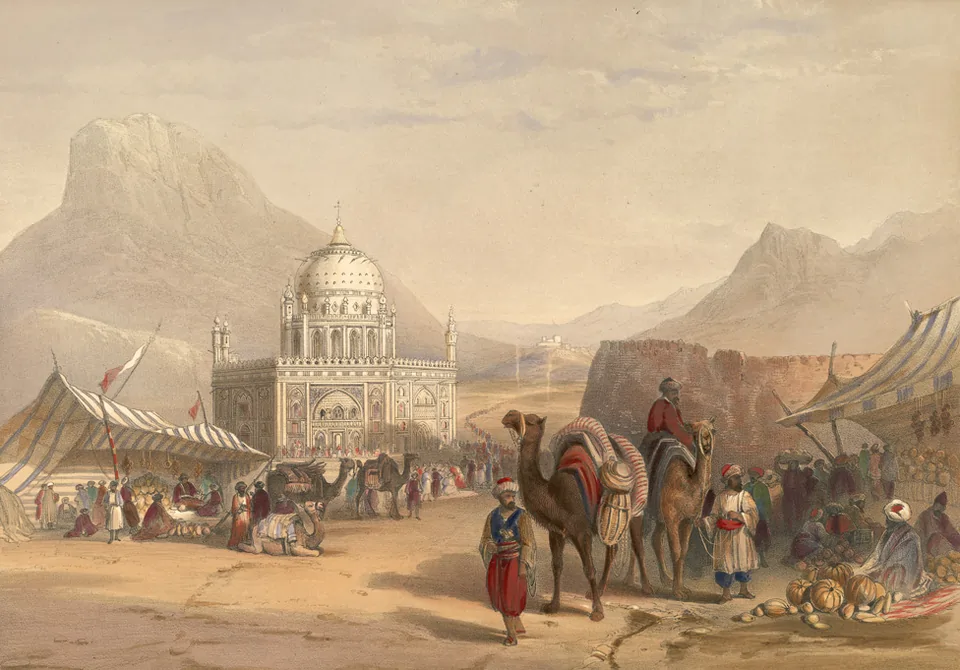Ahmad Shah Durrani
In 1839, James Rattrey (British soldier and artist) visited the tomb of Ahmad Shah Durrani in Kandahar, drew a painting of it and described him as follows : “The sovereign who sleeps there, called by the Afghauns “the faultless King,” was the greatest monarch their country ever produced. The people of every Eastern nation whether friend or foe, speak still in terms of the greatest admiration of his military skill, his nobleness of heart, clemency, and decision of character. His virtues were as numberless as his victories.”
[….]”In addition to his science and military skill, he was fond of study, and patronised men of learning and piety. In his latter years he was anxious to obtain the character of a saint: in this his Majesty’s wishes have been fulfilled, for his temple is regarded as the very perfection of sanctity, and is resorted to as a place of retirement by nobles or chiefs, who, discontented or tired with the world, profess to meditate and pray there. It is also frequented as an asylum by murderers and malefactors of every degree, and neither justice, nor power, nor rank, nor even the hand of royalty itself, dares to molest or touch them there. I believe that no European has ever been permitted to cross the threshold of this holy edifice; and though I, among others, often essayed it, no sooner did we show our unbelieving heads at the outer court yard than it was the signal for the Moollahs and Hadjees (pilgrims), who abounded there, to drive us away with boots and cries of disgust.”
Durrani horsemen of Kandahar
James Rattrey also gives description of the Durrani horsemen of Kandahar who greatly harassed British invaders. He writes: “The Douraunees are celebrated for the excellence of their irregular cavalry, which are capable of bearing great fatigue and of making immensely long marches. In the Candahar districts they harassed and annoyed us incessantly by the boldness and suddenness of their attacks”.
[…] “A Ghoole, or body of fully-equipped Douraunee horse, is a fair sight to behold. How nobly they look moving on in a compact mass, with their military air, long flowing beards and handsome faces, their stalwart figures loosely clad in many-tinted robes, and their turbans of every shape and tie! Handsomely-wrought arms dangle at thigh and back ; and while some don steel cuirasses, shirts of mail, and plumed casques, others wear the Persian lambskin or golden skull cap, from under which escape their long raven love-locks in the richest profusion. Now flourishing their spears and scimitars, and holding high their crested and embroidered pennons, they rein in and caracole their gaudily-clad horses, or dashing out they fire their rifles at the wheel with screams of delight. Each cavalier speaks much, and is full of fire and gesture; while their silver-bossed and metal-plated housings jingle merrily , and their kettle-drums beat time to the tramp of the martial company.”
